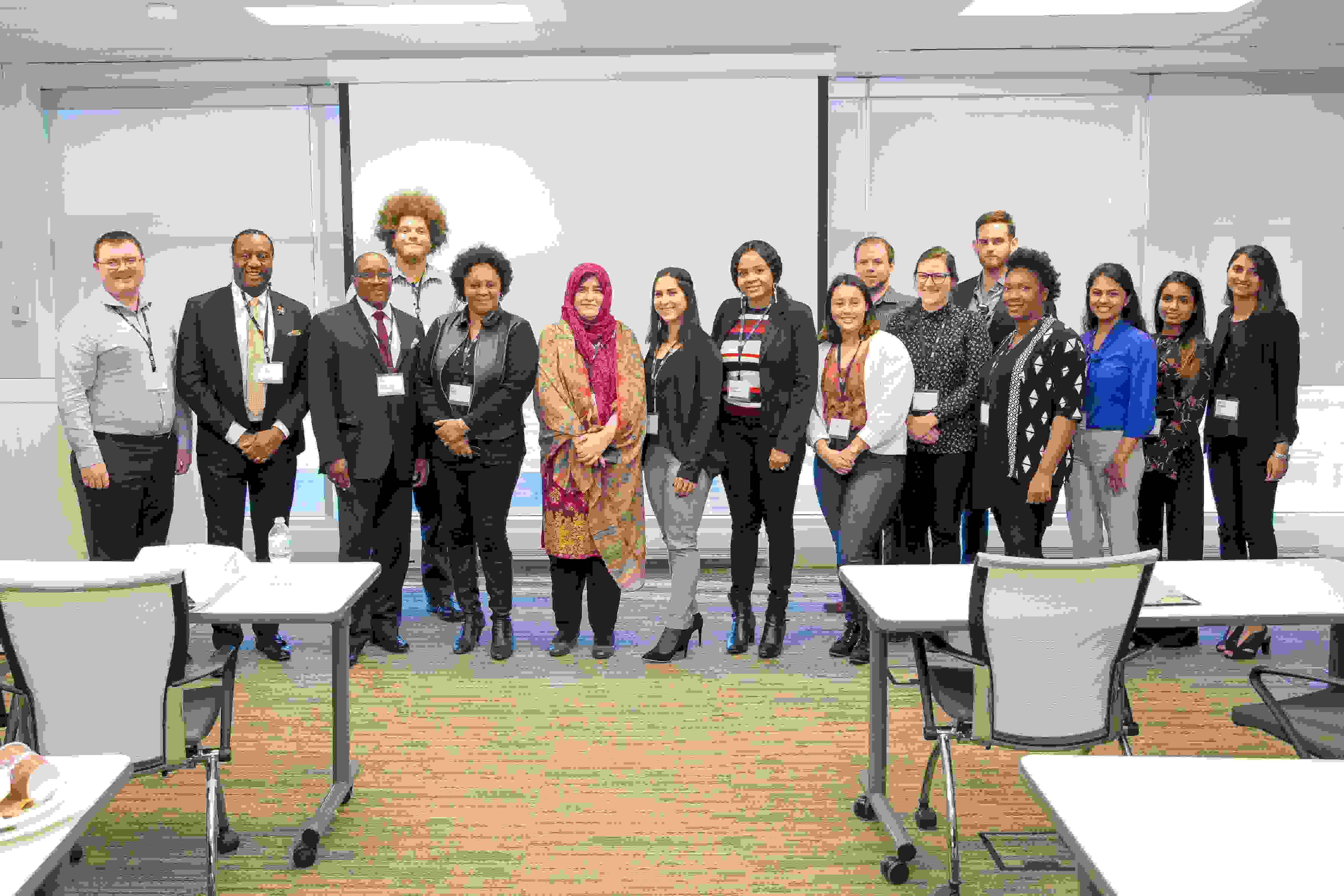on
BY: ALYSSA MAHADEO
Problem child.
That’s the term most time used to describe the children of families within our community, children who require special care, attention, and guidance so they can be better understood and receive the help they need to get on the right track and break out of this unfortunate stigma.
It’s not uncommon to hear about matters pertaining to crime and violence involving young people. As unfortunate as it is, these children are finding themselves in dangerous and life-threatening situations that include fighting, bullying, threatening others with weapons and gang-related violence.
After dedicating much of his life to his successful career in the financial sector Ron Cunningham chose to leave the industry in 2002 to start his own private accounting practice to better devote his time to meet the needs of inner-city high-risk children and youth.
“I always had a keen interest in corporate citizenship, philanthropy and I have spent much of my time and resources giving back to my native country of Jamaica,” Ron shares. “I founded the Citizens for the Advancement of Community Development (CACD) offering after-school programs for middle school children, leadership and mentoring for high school youth, life skills, youth justice, and crime and violence programs that impact the lives of hundreds of children and youth on a yearly basis.”
Recognized by the city for the much-needed work that he has dedicated his time, Ron was invited to be a speaker at the Safe City 2018 Crime Prevention Conference on Tuesday, November 20th, 2018 at the Corporate Event Centre in Mississauga.
Safe City Mississauga is a registered charitable organization founded in 1992 to help reduce criminal opportunity and criminal victimization in Mississauga. Established in 2010, the Crime Prevention Conference is an annual event presented by Safe City Mississauga. The conference gathers together police, government officials, educators, social workers, crime prevention practitioners, and community organizations to discuss best practices for crime prevention, and to determine how to implement these practices to make our communities safer.
“They exist specifically to address issues of crime and violence, by running workshops and conferences to bring awareness to the issues surrounding violence and run programs for youth to ensure they are taking the right path to avoid crime and violence,” Ron explains.
Ron says that organizations like the CACD that work with ‘at risk youth’ are drawn to these conferences to be aware of what the challenges and issues are and what can be done to minimize crime and violence within the city. Ron’s strong passion for social action and community building has won him numerous awards and recognition. He was recognized by former Mississauga Mayor Hazel McCallion for his exemplary work in community development. Prior to the Safe City Conference, he submitted a presentation proposal and was selected to be a speaker at the conference on Tuesday.
His presentation was based on Youth Violence Prevention: Crime Prevention Through Social Development (CPTSD) Approach.
In his presentation, Ron focused on the causes of youth violence, where it starts and also how his organization is working to transform communities by implementing preventative measures in the lives of youth who are deemed ‘at risk.’
“CACD model is a Crime Prevention through Social Development (CPTSD) approach. CPTSD argues that the best method of crime prevention is through addressing its underlying root causes in the community and in the individual,” Ron explains in his presentation.
“Underneath the healthy, well-adjusted, upwardly mobile youth is a host of social factors, each contributing to the success of the individual by opening up opportunities and providing them with the skill set they need to succeed in life.”
The presentation covered a background on youth violence which results in short and long-term negative outcomes for youth, their friends, families, and communities. It affects a communities economic health, as well as individuals’ physical and mental health and well-being.’
“I was drawn to issues that are broader than just Mississauga because some of the situations that we hear about in Toronto are happening just the same here in Mississauga and also in Brampton, it’s just a matter of scale and that is something that is expected,” Ron shares. “With larger cities, there tend to be more social issues that come to the surface.”
In his presentation, Ron reviewed some of the roots of youth violence that stems from poverty, racism, family issues, issues in the education system, health, community design, and underlying issues in the justice system.
Through his presentation, Ron proposed four research-based strategies: partnership should include government, faith, community, business, media, foundation, and research and an approach that sees: combinations of Prevention, Intervention, and Response (Enforcement and Re-Entry)
Violence Prevention Strategies included promoting safe and supportive home environments, work with schools to proactively prevent violence through prevention programming and school climates that foster a sense of inclusivity and belonging among students. Organizing the community to reduce risks and increase protective factors and advocate with systems to address social conditions and improve system practices related to violence.
The goal of youth violence prevention is simple—to stop youth violence from happening in the first place. But as we all know, “the solutions are as complex as the problem”. Prevention should address all types of influences on youth violence: individual, relationship, community, and society.
“Consequently,” Ron concludes. “We as members of the community need to work together to break the cycle of poverty and hopelessness—which are often the root causes of violence. We need to address this urgent public safety issue in our community through a comprehensive, full scale, long-term approach to violence prevention. Indeed, we need your help, it can’t be just those who are burning themselves out – they need the support of the community, they need you.”
Stay in the loop with exclusive news, stories, and insights—delivered straight to your inbox. No fluff, just real content that matters. Sign up today!












